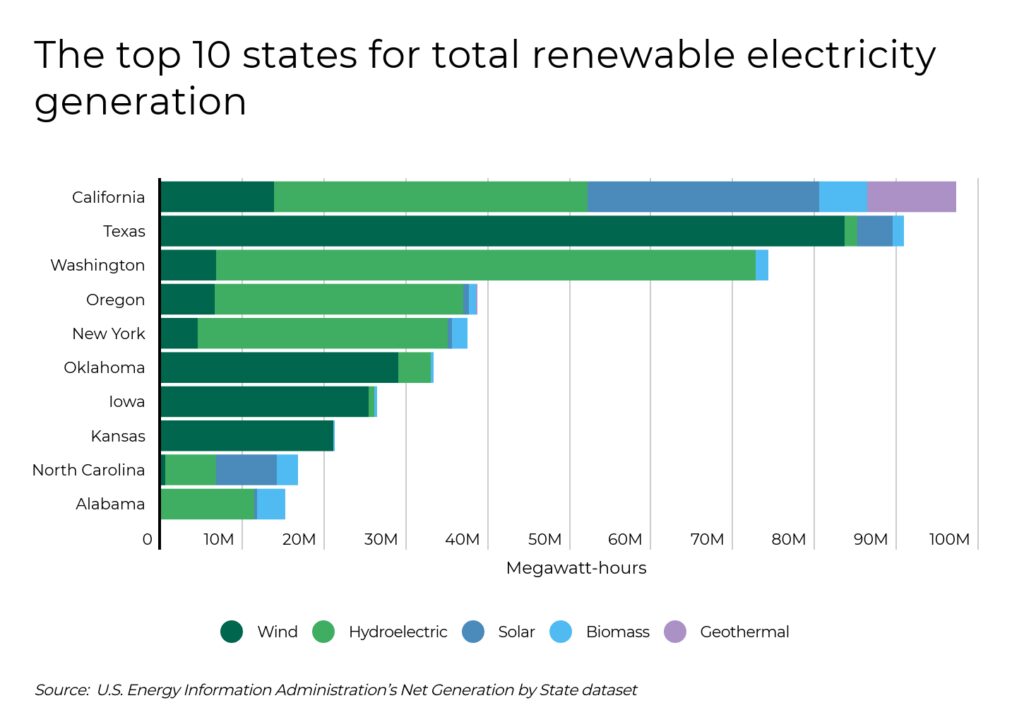What is the fastest growing renewable energy in us?

The United States is witnessing a remarkable transformation in its energy landscape, with a significant shift towards renewable sources. As the world grapples with the consequences of climate change, the need for sustainable and clean energy options has become more pressing than ever. In this article, we will delve into the fastest growing renewable energy source in the US, the factors driving its growth, the challenges it faces, and the government initiatives and policies that are shaping its trajectory.
- The Current State of Renewable Energy in the US
- The Fastest Growing Renewable Energy Source
- Factors Driving the Growth of Renewable Energy
- Challenges and Limitations
- Government Initiatives and Policies
- Case Studies: Successful Renewable Energy Projects
- Future Outlook and Projections
- Conclusion
- Frequently Asked Questions
The Current State of Renewable Energy in the US
The US has made substantial progress in harnessing renewable energy sources. Solar, wind, hydropower, and biomass are among the key contributors to the country's renewable energy capacity. According to recent reports, renewable energy accounted for nearly 18% of total electricity generation in the US in 2020, marking a significant increase from previous years.
The Fastest Growing Renewable Energy Source
Among the various renewable energy sources, solar power has emerged as the fastest growing in the US. The falling costs of solar panels, coupled with advancements in technology, have made solar energy increasingly affordable and accessible to both residential and commercial consumers. The growth in solar installations has been particularly prominent in states with favorable policies and incentives.
Factors Driving the Growth of Renewable Energy
Several factors have contributed to the rapid growth of renewable energy in the US. Firstly, the increasing awareness and concern about climate change have prompted individuals, businesses, and governments to prioritize clean energy sources. Additionally, the declining costs of renewable energy technologies have made them more competitive with traditional fossil fuel sources. Moreover, government incentives, tax credits, and renewable portfolio standards have played a crucial role in driving investment and adoption of renewable energy.
Challenges and Limitations
While renewable energy has experienced significant growth, it still faces challenges and limitations. The intermittent nature of certain renewable sources, such as solar and wind, poses challenges for grid integration and reliability. Additionally, the availability of suitable locations for large-scale renewable energy projects, transmission infrastructure limitations, and the need for energy storage solutions are among the key challenges that need to be addressed for sustained growth.
Government Initiatives and Policies
The US government has implemented various initiatives and policies to support the growth of renewable energy. The Investment Tax Credit (ITC) and the Production Tax Credit (PTC) provide financial incentives for solar and wind energy projects, respectively. Additionally, federal agencies have set renewable energy goals, and states have implemented Renewable Portfolio Standards (RPS) to drive the adoption of clean energy sources.
Case Studies: Successful Renewable Energy Projects
Several successful renewable energy projects serve as inspiring examples of the potential and benefits of clean energy. The Ivanpah Solar Power Facility in California, the Block Island Wind Farm in Rhode Island, and the Hoover Dam in Nevada are among the notable projects that have contributed to the growth of renewable energy in the US.
Future Outlook and Projections
The future of renewable energy in the US looks promising. Continued advancements in technology, coupled with supportive government policies, are expected to further accelerate the growth of renewable energy sources. Projections suggest that renewable energy could account for a larger share of the country's electricity generation in the coming years, reducing greenhouse gas emissions and fostering a more sustainable energy future.
Conclusion
The rapid growth of renewable energy in the US is a testament to the increasing recognition of the importance of clean and sustainable energy sources. Solar power, in particular, has emerged as the fastest growing renewable energy source, driven by falling costs and favorable policies. While challenges and limitations exist, government initiatives and successful projects showcase the potential for further growth. By embracing renewable energy, individuals and businesses can contribute to a cleaner and more sustainable future.
Frequently Asked Questions
1. What is renewable energy?
Renewable energy refers to energy that is derived from naturally replenishable sources, such as sunlight, wind, water, and biomass. Unlike fossil fuels, which are finite and contribute to environmental pollution, renewable energy sources are sustainable and have minimal negative impact on the environment.
2. Why is renewable energy important?
Renewable energy is important because it offers a sustainable and clean alternative to fossil fuels. By reducing dependence on fossil fuels, renewable energy helps mitigate climate change, reduce air and water pollution, and promote energy security. Additionally, renewable energy sources have the potential to create jobs and stimulate economic growth.
3. What are the benefits of the fastest growing renewable energy in the US?
The fastest growing renewable energy source in the US, solar power, offers numerous benefits. It reduces greenhouse gas emissions and helps combat climate change. Solar energy also provides a reliable and decentralized source of electricity, reduces electricity bills for consumers, and creates job opportunities in the solar industry.
4. How can individuals contribute to the growth of renewable energy?
Individuals can contribute to the growth of renewable energy by adopting sustainable practices in their daily lives. Installing solar panels on rooftops, purchasing renewable energy from utility providers, and conserving energy are some ways individuals can support the growth of renewable energy. Additionally, advocating for supportive government policies and investing in renewable energy companies can make a positive impact.

Leave a Reply